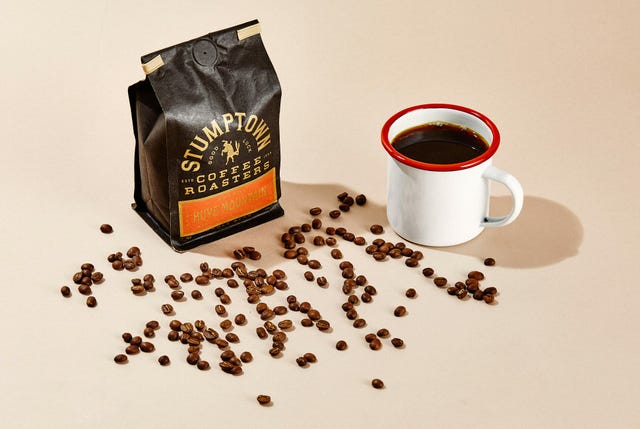Coffee is confusing. It is the seed of a fruit that grows off an exceptionally finicky plant, which itself roots in hard-to-access parts of the world. Once the seed is obtained, it’s then bagged and freighted thousands of miles to a roaster who cooks it using a combination of math and feel. Then it is ground and brewed into coffee, both tasks that require a cupboard’s worth of gear.
The reality, however, is that this gear controls very few of the variables that determine the quality of this coffee.
At the end of the day, there are really three variables to keep in mind: your grinder and grind level, the brewing style, and when it is you brew that seed into something drinkable. The latter is easiest to gloss over — and according to Peter Giuliano, the Chief Research Officer at the Specialty Coffee Association, perhaps the most misunderstood.
“There isn’t a perfect, catch-all way to describe how long coffee is going to be good for, really, because there are far too many variables to consider," Giuliano said. But there are still some general guidelines everyone can keep in mind.
How Long Does Coffee Last?
Drinking coffee within two weeks of it being roasted is best, Giuliano says. “It degrades very quickly after that."
"By three months, the coffee is fully stale," he goes on. "However, these numbers change dramatically depending on packaging material and atmosphere.”
Why Does Coffee Go Stale?
The gist, says Giuliano and the team behind the SCA’s Coffee Freshness Handbook, is that coffee loses quality (a word many science types balk at, as it’s often viewed as a subjective quality) by de-gassing and growth of “undesirable compounds.”
Prior to roasting, coffee beans carry the same level of carbon dioxide as the air around you. Once roasted, up to two percent of each bean’s weight may be carbon dioxide. Gas begins leaking from the bean the moment roasting ends, and the release of this gas leads to the loss of the coffee’s aromatics (also called volatile organic compounds) and the oxidization of the beans. The bad flavors that crop up are a result of age and oxidization.
Can You Increase the Shelf Life of Coffee?
Oxygen is the ultimate enemy of coffee beans, which is why most bags of coffee nowadays feature a small valve hole. This one-way hole is for de-gassing carbon dioxide to escape (so the bag doesn’t inflate and explode) and doesn’t allow oxygen into the bag. This means that the bag is primarily filled with carbon dioxide making its way out of the bag, and very, very little oxygen.
According to Giuliano, the carbon dioxide in the bag even acts like a “blanket” to cover the beans and protect them from oxygen. He also explains why, even if you’re re-opening the bag to make coffee, you aren’t losing much carbon dioxide.
“If you dump all the beans into a new container — which contains oxygen — you are basically disposing of that valuable C02 blanket, and replacing it with oxygen-containing atmosphere,” Giuliano says. The effect of vacuum containers that remove the air from the interior of the canister, like Fellow’s Atmos canister, remains untested, according to Giuliano.
So, it turns out, one of the best things you can do is simply leave your coffee in the bag — just don't leave it too long.























